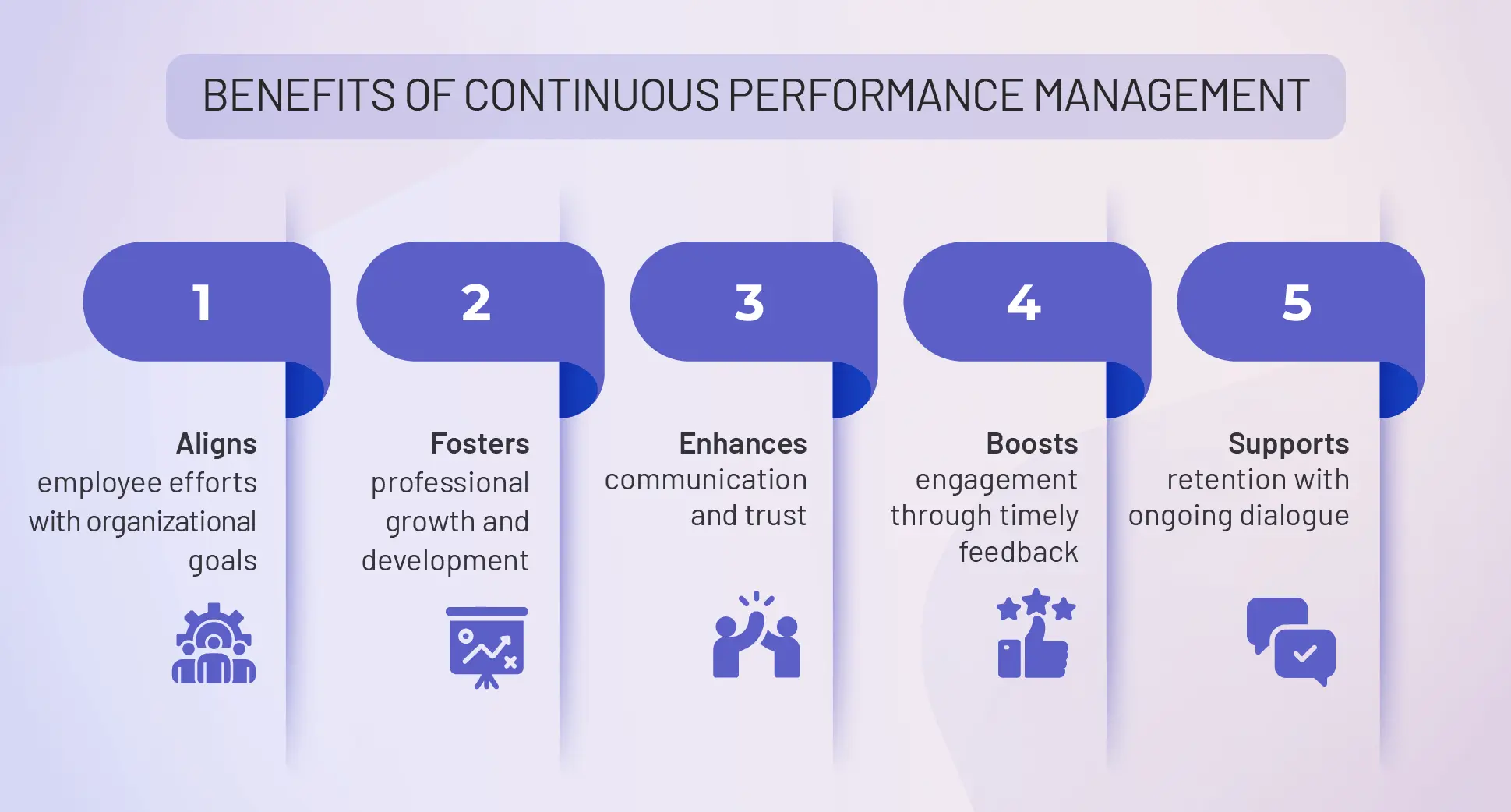In today’s fast-evolving workplace, organizations are reevaluating how they assess and develop individual employees. Traditional annual performance reviews, once the cornerstone of performance management, are increasingly challenged by continuous performance management, which prioritizes real-time feedback.
As businesses strive for agility and employee engagement, the debate over the best performance management system intensifies. This article explores the evolution, benefits, challenges, and real-world examples of both approaches.
Annual performance reviews are formal, yearly performance evaluations where managers assess direct reports based on predefined goals and metrics.
These performance appraisals typically involve written evaluations, formal meetings, and performance discussions about future objectives. Historically, they ensured personal accountability, aligning employee performance with broader organizational goals.
However, their limitations are evident. An SHRM article notes that only 14% of employees feel motivated by the appraisal process. Delayed feedback and formality often hinder employee motivation rather than foster constructive feedback.
As a result, many organizations are shifting toward continuous performance management to meet modern demands for ongoing employee development.
Continuous performance reviews prioritize ongoing feedback over the traditional review process of annual reviews. Managers and employees engage in regular check-ins, often weekly or monthly, to discuss employee progress, set goals, and provide timely feedback, emphasizing professional development over judgment. This approach fosters improved communication and collaboration, aligning with the fast-paced nature of today’s workplaces.
The key differences are outlined below:
Continuous reviews leverage performance management software like Teamflect's employee performance review software to streamline feedback sessions and track progress, making them ideal for dynamic environments.

The shift from annual reviews is driven by the need for agility in 2025’s business landscape. The evaluation process of annual reviews is often too slow to address issues promptly, impacting employee effectiveness. Employee engagement and customer retention are critical priorities.
According to Gallup’s 2024 report, only 23% of employees are engaged globally, costing organizations $450-550 billion annually in the U.S. Continuous feedback can reduce turnover by up to 14.9%. Annual employee reviews, often perceived as a “judgment day,” can undermine job satisfaction due to their infrequency.
Companies like Adobe have seen success with continuous models, reporting higher engagement after implementing their “Check-In” system. These real-world examples highlight why organizations are adopting continuous improvement in performance management.
Continuous performance reviews offer significant benefits over annual reviews, as summarized in the table below:
Performance management software, such as performance review software, enhances these benefits by enabling employees to receive anonymous feedback and monitor progress.
Despite the rise of continuous feedback, annual performance reviews retain value in specific contexts. They provide a thorough review for legal and compliance purposes, align with performance ratings for compensation, and offer a comprehensive year-end summary.
The evolution of performance management has closely mirrored shifting economic and workforce dynamics. The Harvard Business Review highlights that in times when talent was abundant, traditional appraisals—focused on evaluating individual contributions to guide retention, dismissal, or rewards—were effective.

Continuous reviews significantly boost employee engagement and customer retention by making employees feel focused and valued. Research shows that organizations with high engagement experience 14.9% lower turnover rates compared to those with low engagement.
Ongoing feedback fosters trust and boosts employee motivation, as illustrated by Confluence, a landscape architecture firm. Since adopting a feedback and goal-tracking tool, it has streamlined performance cycles, made feedback and self‑appraisals more consistent, and unified goals and review data in one place. These improvements helped strengthen personal accountability and employee engagement.
Implementing continuous performance management presents challenges:
A 2023 SHRM article highlights these challenges in performance systems, emphasizing the need for strategic planning to ensure employee growth.
Combining annual and continuous performance reviews allows organizations to take a more balanced approach to performance management. Regular check-ins help capture progress, challenges, and development needs as they happen, while annual reviews provide a dedicated opportunity to reflect on the year as a whole. Feedback collected throughout the year can then be carried into a year-end review template, helping ensure the final evaluation reflects performance over time rather than isolated moments.
When these two approaches work together, performance discussions become more consistent and grounded, supporting both ongoing development and clear year-end outcomes. This approach combines the agility of continuous feedback with the structure of annual performance, creating a robust performance management system.
Effective hybrid models include:
These models, supported by a performance review template, suit diverse needs and promote employee growth.
Appropriate training is critical for transitioning to continuous performance reviews. Managers need skills in delivering constructive feedback, coaching for professional development, and using performance management software. Key training topics include:
To evaluate employee performance reviews, organizations should track:
In addition, these key employee performance metrics also provide valuable insights into the performance management system’s effectiveness.
Long-term evaluation of employee reviews involves multiple methods:
Fully implementing continuous performance reviews, from transitioning to it to evaluating its effectiveness, can take a toll on manual HR tasks. It might help to consider the utilization of a performance management solution to streamline things!
Choosing the right performance management approach depends on several factors:
There is no one-size-fits-all solution. Organizations should assess their needs, leveraging performance management software like performance review software to support professional growth and employee’s contributions.
The debate between annual and continuous performance reviews reflects evolving workplace dynamics. Annual reviews offer structure and formality, while continuous reviews provide agility and employee engagement.
Hybrid models, combining the best of both, may be the most effective for many organizations. By understanding each approach’s strengths, challenges, and real-world applications, companies can create performance management systems that drive employee growth and business success through ongoing dialogue and actionable feedback.
An all-in-one performance management tool for Microsoft Teams
